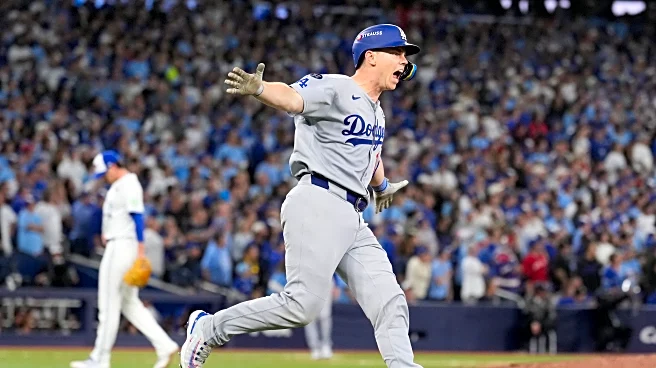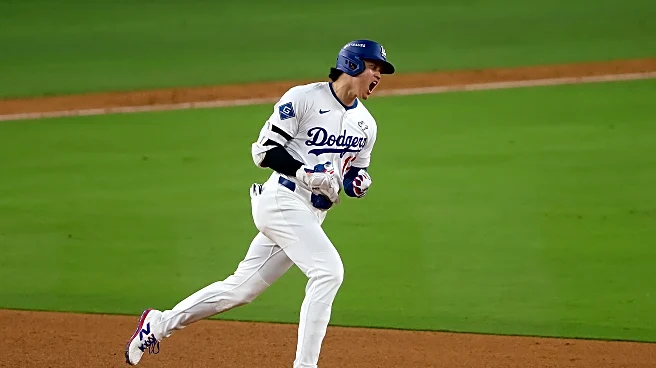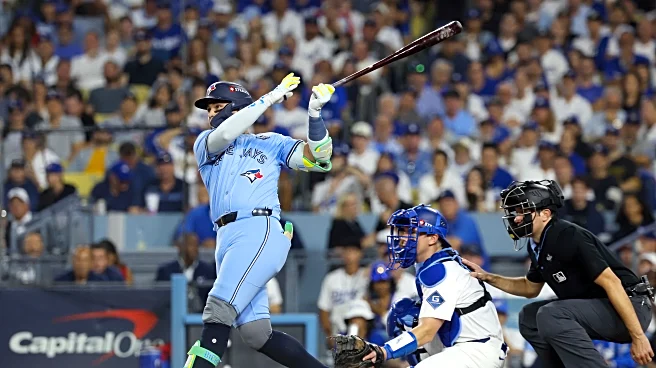The slow death of the starting pitcher has been a tragedy to watch in MLB over the last decade. In 2010, there were 92 qualified starters. That number dipped to 78 by 2015, 61 by 2019, and just 52 this
season. Just 15 years after there were, on average, three starters per team that were qualified, teams would be lucky to have more than one.
The traditional starter has also had a sledgehammer taken to it in the postseason, to the point where relievers have thrown more innings than starters in four of the last six postseasons. Gone are the days of short rest, leaning on aces, and abandoning pitch counts. Yet, this postseason felt different. Were the numbers much different? Not particularly, but the vibes were tremendously different.
For one, there’s nothing more satisfying than seeing an ace closing out the World Series on short rest. Madison Bumgarner’s performance in the 2014 World Series is something has gone down history, and I suspect that what Yoshinobu Yamamoto did in this entire postseason will be remembered the exact same way. One day after throwing 96 pitches, he tossed 2.2 innings to save his team’s season.
And that’s not even the most impressive part of his playoff run. He threw the first back-to-back complete games in October since Curt Schilling in 2001. He threw 37.1 innings across six games and a grand total of 526 pitches. That is what you pay a guy $325 million for.
Game 7 on Saturday night was a love letter to the entire sport. It was two teams that left everything on field with everything on the line. Shohei Ohtani started the game on three days’ rest, Blake Snell and Yamamoto pitched key relief on even less rest, and we saw Tyler Glasnow get the save on three days’ rest in Game 6, only to turn around and throw 38 pitches on the very next night. Many tweets will be typed about how this billion-dollar quartet is bad for the game, but this is what we want to see.
Trey Yesavage, a man who was pitching in Low-A on May 13th, became a postseason hero. John Schneider placed an unprecedented amount of trust in him, and that trust only expanded in October. He pitched into the eighth inning in Game 5 of the World Series and showed up three days later to get five critical outs in Game 7.
Both of these teams, especially the Dodgers, placed a reliance on their starters to try to win a World Series. Compare that to last year, when the Dodgers used a bullpen game and had shaky faith in Walker Buehler and Jack Flaherty en route to a title, and you see a stark difference.
But it wasn’t just these two teams driving the revival; several other teams showed an increased amount of reliance on their rotation come October. Boston would pitch Garrett Crochet until the wheels fell off, successfully bridging their ace to Aroldis Chapman in a 7.2-inning, 117-pitch gem. Our very own Yankees would lean on the trio of Max Fried, Carlos Rodón, and rookie Cam Schlittler to throw 20.1 innings in the Wild Card Round.
Schlittler was the most notable, as all modern-day wisdom suggests not to give a rookie a big leash. Instead, Aaron Boone leaned on him for eight innings in Game 2 against Boston, only relenting to David Bednar when the 24-year-old had reached 107 pitches. Against a Blue Jays team that refused to strike out and had seen the ball well against him in previous starts, Schlittler pitched into the seventh.
On the other side of the bracket, you saw the Philadelphia Phillies rely on their nucleus of starters in their brief postseason run. Christopher Sanchez tossed 12 innings in two games, Jesús Luzardo had a six-inning start, and they stacked Aaron Nola and Ranger Suarez to get through seven innings in their lone victory in Game 3.
Of course, several teams stayed with the new status quo of relying on their bullpens, but most of them flamed out. Aside from a strong six innings for Gavin Williams in Game 1 of the Wild Card Round, Cleveland heavily relied on their bullpen, getting just seven combined innings from Tanner Bibee and Slade Cecconi. The Tigers might’ve made it to Game 5 of the ALDS, but aside from the brilliance of Tarik Skubal, their other starters (Casey Mize, Jack Flaherty, Troy Melton) all failed to finish five innings in their combined five starts.
The Brewers flamed out because their bats betrayed them, but their bizarre pitching situation saw the likes of Aaron Ashby, Quinn Priester, Trevor Megill, and Jose Quintana make a combined six starts and not once record an out in the third inning. The Cubs used openers and the longest starts of their eight-game postseason run were a pair of 4.2-inning outings by Matthew Boyd.
So, it’s not universal, but it certainly feels like for several teams, there was a concerted comeback effort for the starting pitcher in October. Normal pitch counts were being ignored more, as was the “third time through” mantra. The question is, why?
Well, most of the teams that trusted their starters longer just wanted to shield their mediocre bullpens from primetime. The Dodgers, Blue Jays, Yankees, and Phillies had significant bullpen problems, marred by underperformance, injuries, and suspensions in the case of Philadelphia’s José Alvarado. There’s also the increased prevalence of the reliever familiarity effect, which describes how hitters improve the more they see a reliever in a series. In October, high-leverage relievers are the ones pitching in every somewhat winnable game, and if a team only has a circle of trust of two or three relievers, that adds up.
We’ll likely never return to the starting pitcher of old, with starters expected to finish what they started when they picked up the ball. But it was refreshing to see some teams renew their faith in their best pitchers. Top starters were leaned on hard this October, and the playoffs were that much more fun to watch because of it.
It’s been the demise of Cleveland, for example, in consecutive postseasons. Hunter Gaddis and Cade Smith are only so effective when the other hitter has seen you multiple times. Just ask Juan Soto, Giancarlo Stanton, and an assortment of Tigers in the Wild Card Series.
Ultimately, it’s good for the game when we have identifiable aces coming out every October and shoving. Randy Johnson, Pedro Martinez, Greg Maddux, and Roger Clemens defined a generation of pitchers, as did Max Scherzer, Clayton Kershaw, and Justin Verlander. It would do wonders for the league if a new generation got to show they’re capable of the same.












